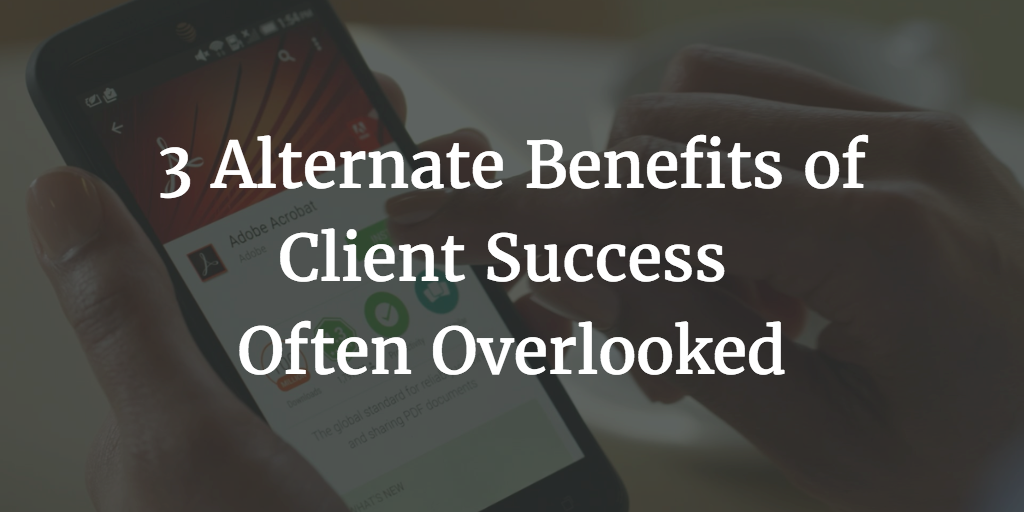Tom is a highly-motivated and innovative success leader, managing the Adobe eSign Services’ International Client Success team in EMEA and APAC. Tom’s passion is seeking and deploying the next innovative technologies that will improve the way people live, communicate and execute business. In his downtime he enjoys running, barbecuing, and wine tasting.
When Adobe first acquired Adobe eSign Services (at the time EchoSign), I was part of a small tight-knit team and was appointed as the first Enterprise Client Success Manager in EMEA, working on the eSignature product.
Back then, a lot of the software industry hadn’t yet transitioned away from the perpetual license model to the now common subscription-based model. The industry was accustomed to the concept of selling software to a customer, hiding under a rock for a few years, then returning in attempt to upsell or convert to a newer version.
Fast-forward to today, software has a much lower cost of entry on a monthly, yearly or multi-year subscription; the recurring revenue of the customer adds up over time in a much more sustainable way. On the negative side, however, a customer who buys once and doesn’t renew will lose money for many Software-as-a-Service (SaaS) businesses. This makes it absolutely critical that customers not only renew, but expand their footprint with a product over time, resulting in additional business value for the customer and revenue for the provider.
How is that achieved? In a word, or two words, rather…Client Success!
A savvy and proactive Client Success team can help make a product “sticky” with customers as well as entice them to have wider and deeper use of the product. Increasing revenue begins with protecting the revenue you already have. Without any sort of Client Success strategy, business growth will have less momentum as customers churn and new business sales struggle to keep up. Client Success plugs the holes in the bucket.
This has become obvious to a growing number of SaaS companies here in EMEA and worldwide. Therefore, it’s fairly simple to justify creating or expanding a CSM team to the executive team, based on churn or growth projections alone. Take Adobe eSign Services for example, as we’ve worked to build deeper relationships and engagements with our clients, we’ve seen our renewal percentage rates climb YoY to an industry leading level in the high 90’s, for the Enterprise base – That’s a fairly solid platform for growth and sustainability!
It’s commonplace for CSMs to be measured on retention and upsell, but putting that to one side, there are a further three internal merits of CSM that aren’t as often apparent when justifying the headcount to the executive team.
Free Marketing
As the CSM builds that trusted relationship with clients, the referenceability of your brand will noticeably improve. Positive ratings on sites like G2Crowd, Trust Radius or SFDC AppExchange will skyrocket, and you’ll have a growing stack of case studies to arm your sales team with.
People really do pay attention to glowing reviews and case studies. Don’t think of this as a “nice to have;” think of it as a necessity. If a SaaS business doesn’t have reference stories, if reviews are poor or they don’t have clients willing to go on file to say how great they are, they’re probably not going to sell or renew subscriptions as easily.
Rapidly expanding your business
With the support of a CSM team, new clients will deploy much, much faster. The onboarding process is one of the most hazardous times for customer churn.
A speedy onboarding process is invaluable and can pave the way for infant customers to become power users in no time at all. They’ll consume licenses faster, be hungry for greater adoption, and come back to buy more, all thanks to the ongoing strategic enablement offered by Client Success.
Improving the product
Client Success Managers are constantly in touch with users and obtain first hand experience as to how the product is actually used, rather than assumptions made by the rest of the business. When there is scope for product improvement, a CSM is often the very first to know and can provide that feedback internally.
It is the CSM’s job to learn how a client really uses the product rather than just how the provider thinks they use it. Through the relationships the CSM holds with the customer, they can facilitate an open two-way discussion with the product team, assist with Customer Advisory Boards or wider collaborative user groups, all providing greater insight.
Ultimately, that feedback directly translates to an enhanced, holistic product that works in the real world. It’s a win-win. Customers are happy as they feel involved and get a fantastic product, happier customers and a more relevant product equal higher retention and accelerated business growth!
Summary
In summary, the term “Client Success” means different things to different people. However, one universal aspect that people agree on is that having a well performing Client Success function will make your customers more successful and attain a good ROI. Successful customers have direct correlation to reduced churn, heightened sales and referencability, which are all buzzwords that any executive team will always consider investment in!
About Adobe
As the inventor of PDF, Adobe brings over 20 years of experience with secure digital documents to help businesses compete more effectively. Document Cloud provides departments and entire organizations with services, including enterprise-class eSign services, which bring speed and efficiency to business document workflows. Leading organizations all over the world–including companies like KLM, Groupon, Jaguar Land Rover, NetAPP and TiVo–rely on Adobe eSign Services for fast, secure and mobile e-signatures. Having processed over 150 million e-sign agreements, eSign services offers solutions for industries including healthcare and insurance, financial services, media and entertainment, government, and schools and universities.

